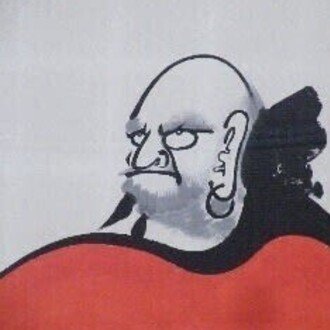
中国から伝わった七夕は、女性の節句。【七夕Ⅰ】 Tanabata from China is a festival of women.
七夕はどの地方でも行う祭事で、願いを書いた短冊を笹に吊り下げ祈願する祭事であるのは周知のとおりである。
It is well known that Tanabata is a festival that is held in every region, and is a festival in which a strip of paper on which a wish is written is suspended and prayed.
ご存知のように、七夕は七月七日、今日である。七夕同様に、新暦の日にちの数字合わせで、三月三日、五月五日、九月九日と節句の歳時が続く。すべてが当然ながら新暦で行われている。
As you know, Tanabata is July 7th. As in the case of Tanabata, the numbers of the new year's dates are set to match March 3rd, May 5th, September 9th, and the festival time. Everything is naturally done in the new calendar.
In the old days, festivals and festivals that were carried out in the old calendar naturally have seasonal shifts in the new calendar.
その昔、旧暦で行われていた歳時や祭り事は、いまの新暦でいうと当然ながら季節のズレが生ずる。
自然の摂理に基づいて行われていた事が、新暦に準ずると違和感が生じるのは言うまでもない。もちろん七夕もそうである。新暦では七月七日であるが、旧暦にあてはめると通年八月十日前後となる。
It goes without saying that something that was done based on the laws of nature would be uncomfortable if it conforms to the new calendar. Of course, the same applies to Tanabata. In the new calendar, it is July 7, but when applied to the old calendar, it is around August 10 of the whole year.
いつもは八月十日前後に夜空を眺めると、もしかすると天の川と織姫星と彦星と上弦の月が見られるかもしれない。上弦の月があっての七夕のようだ。この時期が一番織姫星と彦星が接近する。しかし天の川を挟んでいるから逢うことはない。
If you usually look at the night sky around August 10th, you may see the Milky Way, Orihime Star, Hikoboshi, and the upper moon. It's like Tanabata with the first quarter moon. At this time, Orihime and Hikoboshi approach each other. However, since they are across the Milky Way, they will never meet.
そこで、彦星が上弦の月に乗って織姫に逢いに行く。そんな楽しい伝説がある。だから七夕は、上弦の月を入れ”七夕伝説”が成り立っているらしい。
Then, Hikoboshi rides on the first moon to meet Orihime. There is such a fun legend. Therefore, it seems that the Tanabata legend is established in the Tanabata with the first-quarter moon.
さて、お軸(写真)を見ると
By the way, looking at the axis (photo),

これが七夕を表現するお軸なのだろうかと思ってしまうが。
I wonder if this is the key to expressing Tanabata.
賛(文字)を観ても画を観ても、七夕を想像させる要素が全く見あたらない。では、画はなにかというと、たぶん毬(まり)だろうと思う。なら、葉っぱのようなものははなんだろう、となるが思い当たるものが出てこない。
賛の漢詩を詠むと最後に「乞巧(きっこう)」と書かれてある。この言葉が、中国でいう七夕のことである。
Whether you look at the san (letter) or the picture, you can't find any element that makes you imagine Tanabata. So I think the picture is probably Mari(ball). Then, what would the leaves be? Nothing comes to mind.
When I read the praiseful Chinese poem, the last word is "Kikkou". This word is Tanabata in China.
七夕は、古代中国の祭り事である。それが日本に伝わり日本の風俗や地域にあった七夕に変化していった。中国はいまも七夕を祝う風習はあるようだ。日本のようにお供えをするらしい。中国の場合、女性のお祝い事のようである。裁縫や手芸が上手になりますように、と。
Tanabata is an ancient Chinese festival. It was transmitted to Japan and changed into Tanabata, which was in line with Japanese customs and areas. It seems that China still has a custom of celebrating Tanabata. It seems to be offering like Japan. In China, it seems like a celebration of women. You will be good at sewing and handicrafts.
賛に書いてある七針(針に七つの糸を通す穴がある)で七色毬をつくる。その毬を置いて、七夕の夜に天の川と2つの星、そして月をたらいに映し出し、梶の木の葉の裏に願い事を書いて浮かべるというお遊びがあるらしい。だから、毬に梶の木の葉を添えて七夕を表現している。
Make seven colors with the seven needles written in praise (there are holes for passing seven threads on the needle). It seems that there is a play where you can put that religion on the night of the Star Festival, project the Milky Way, two stars, and the moon on the tub, and write a wish on the back of the leaves of the Kaji tree. Therefore, Kaji leaves are attached to the tree to express Tanabata.
解説を聞いていると一つの祭り事でも、時代や地域、また人の捉え方で内容が異なる。基本情報をおさえながらそれぞれが、それぞれの捉え方で楽しむのがいいのかも。
According to the commentary, the content of one festival is different depending on the time, region, and how people perceive it. It may be good for each person to enjoy their own way of thinking while holding down the basic information.
レポート & 写真(軸) / 渡邉雄二 トップの写真 / フリー画像転載
Reported & Photos by Yuji Watanabe
いいなと思ったら応援しよう!

